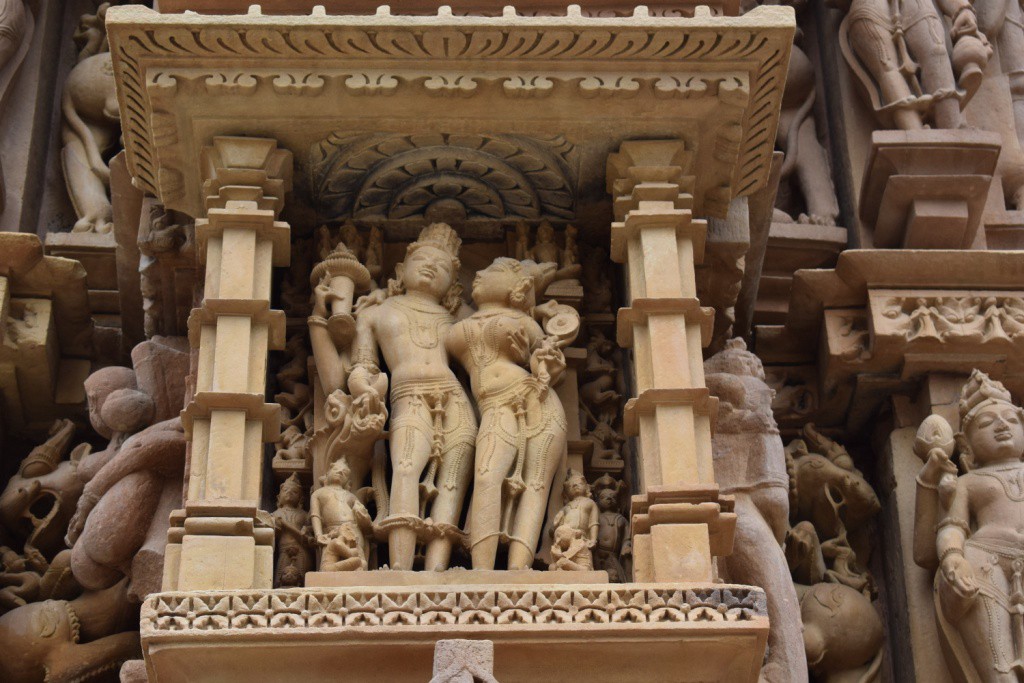In this section, we will go through important temples of the early medieval age of historical importance.
Temples in Central India/Bundelkhand region
A large number of temples were built in the Bundelkhand region during the 9th – 12th century under the patronage of Chandela rulers. Among these temples located at Khajuraho are most prominent. There are 25 temples located in Khajuraho. These temples built-in granite & red sandstone.
These temples belong to Shaivism, Vaishnavism & Jainism. Among Shiva temples, the Kandriya Mahadev temple is most prominent. This temple has one main Shikhar & four smaller Shikhar. This temple is an example of Panchyatna temple, the temple where five deities were worship. These five deities in this temple are Shiva, Parvati / Devi, Ganesh, Vishnu & Surya. Among the Vaishnava temple, the Chaturbhuj temple is the most prominent. Among Jaina temple “Parsvanath” temple is most prominent. These temples have a large number of images on their outer walls.
Gujarat – Rajasthan Temple
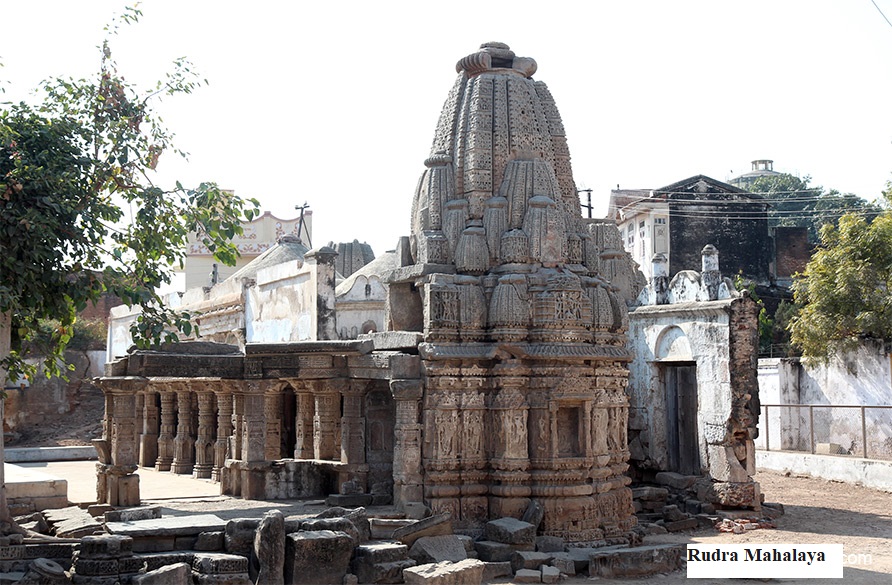
A large number of temples were built in Gujarat – Rajasthan during the 10th – 13th century under the patronage of Chalukya / Solanki rulers of Gujarat. Among these temples, Karnameru temple located at Anhilwara (capital of Solanki), Rudramahalya temple located at Sidhapur & temples located at Mount Abu is most prominent. Mount Abu famous for the Jain temple built in white marble. Dilwara temple & Tejpal temple at Mount Abu is the most famous. These are built by Vastupal, the minister of king Kumarapala.
Temples in Orissa
A large number of temples were built in Orissa in Nagara style during the 8th – 13th These are among the finest temples of the Nagara style. Among these, Lingaraja temple of Bhubaneswar, Jagannath temple of Puri, Sun temple at Konarch & Mukteshwar temple at Bhubaneswar are most prominent.
Lingraja Temple
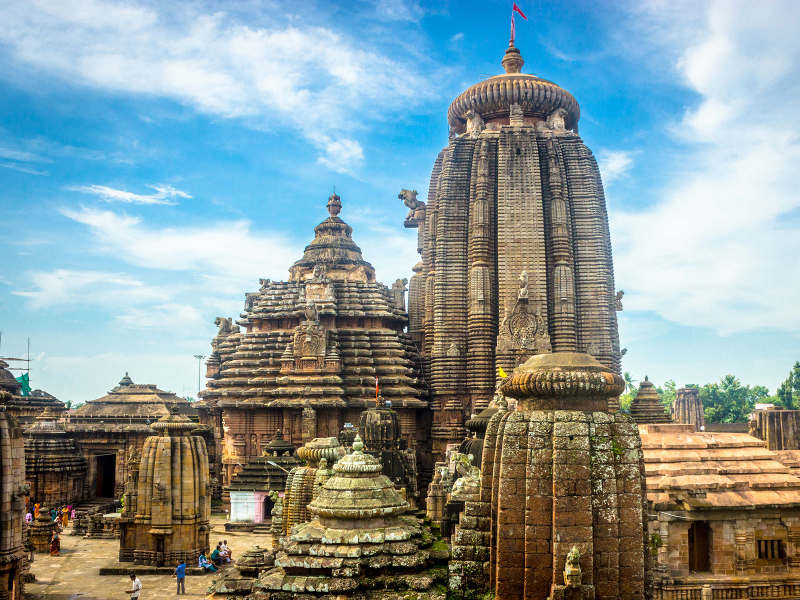
This temple was built by Somavamshi ruler Jajati Keshari in the 11th century. This temple is dedicated to God Harihara (a form of Shiva). Lingraja temple – largest temple in Bhubaneswar. This temple contains 4 main components i.e. Sanctum Jagmohana (assembly hall). Bhoga Mandapa (offering hall) & Nata Mandar (festive hall).
Jagannath Temple
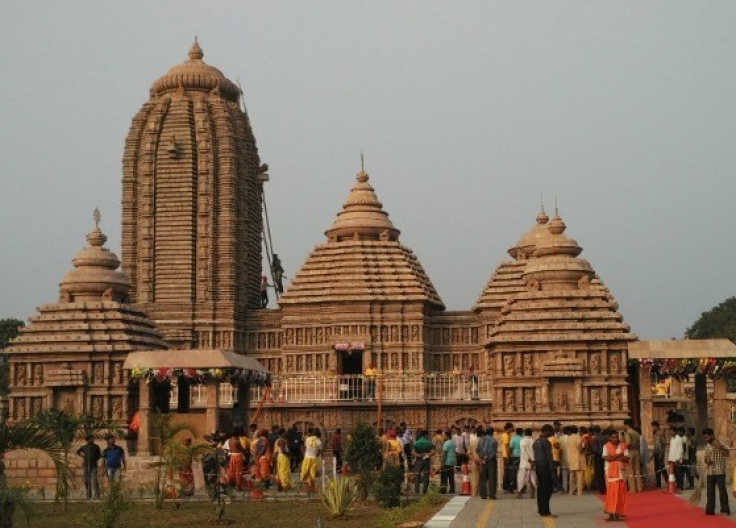
It is dedicated to God Vishnu. In this temple, Krishna, Balram & Subhadra are worshiped together. This is the only temple in India where these two brothers & sister worshiped together. This temple was built by Ganga ruler Anantavarmana Chodaganga Deva in the 12th century. The unique feature of this temple is that images are made up of wood.
These images are replaced after 12-19 years with their replica in a ceremonial manner. This ceremony of replacing images is known as Navakalevara (new embodiment). Chaitanya Mahaprabhu (Vaishnava Bhakti Saint) lived in this temple for many years. Chaitanya invented the Kirtana style of vocal music.
Bhakti saint Ramananda was also associated with this temple. Jagannath temple is known as “White Pagoda”. The Color white of its stone is behind the name. The present temple was rebuilt in the second half of the 12th century by Ananga Bhima Deva on the same spot where the original temple was constructed by his father. This temple is famous for Sudarshan Chakra (weapon of Vishnu/Krishna).
Sun Temple of Konark
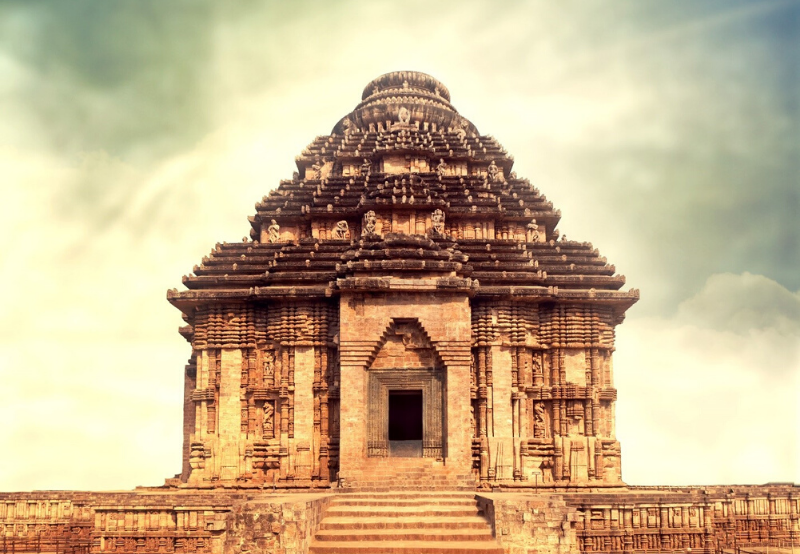
This temple was built by Ganga ruler Narsimha in the 13th century. This temple is in the shape of a Chariot having wheels, pillars & walls. It appears that temples move with the movement of the Sun God. This temple is known as “Black Pagoda” because of the blackish color of the stone. This temple is also famous for the large number of female images on its outer wall. Gurudev Rabindranath Tagore commented about this temple that here the language of stone surpasses the language of man.
Mukteshwar Temple, Bhubaneswar
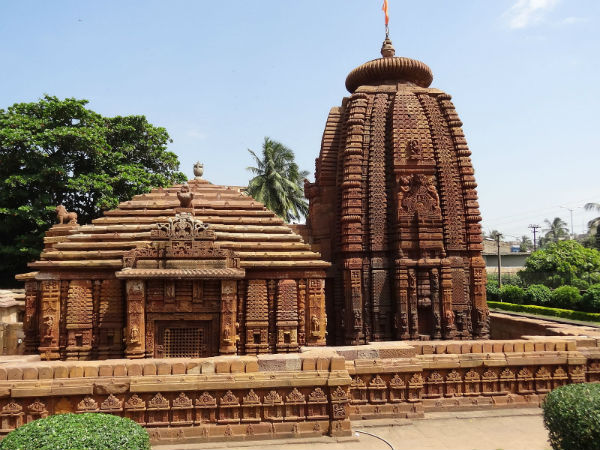
It was built by Somavamshi king Yayati-I in the 10th century. This temple is known as the “Gem of Orissa Architecture”. Because in terms of ornamentation & refinement it’s considered to be the finest.

